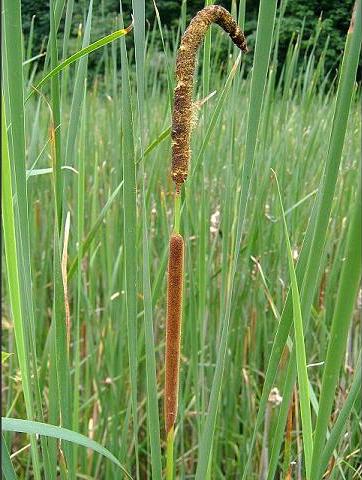Cattail Hybridization
Cattail Hybridization: An Example of Cryptic Plant Invasions
Hybridization of plants occurs when two species from the same or different genera mate and can successfully produce viable seeds. Hybridization of plants can increase genetic diversity, but it can also result in aggressive taxa that can displace native species and decrease wetland plant biodiversity. Here we identify two cattail species, Broad-Leaved Cattail (Typha latifolia) and Narrow-Leaved Cattail (Typha angustifolia), and hybrids of these two species referred to as White or Intermediate Cattail Typha glauca.
The importance of cattail hybridization is that it has facilitated cattail spread in various wetlands of North America. From 2004 to 2012 we evaluated whether hybridization of cattails was occurring in seven Great Lakes national parks and two other national parks. We present results for Apostle Islands National Lakeshore, Cuyahoga Valley National Park, Indiana Dunes National Lakeshore, Pictured Rocks National Lakeshore, St. Croix National Scenic Riverway, Sleeping Bear Dunes National Lakeshore, and Voyageurs National Park. All parks except Pictured Rocks included hybrid taxa. The technique holds promise for cattail taxonomic identification for wetland managers. Cattail management methods are also described.
PDF Article Link: ParkScience30(2)Fall2013_58-68_MarburgerTravis_3668
White Cattail (Typha glauca), with ‘glauca’ meaning powdery white coating on their leaves, is a perennial, erect wetland plant reaching 5-10’ tall, often with a submersed base. Hybrid cattail is a hybrid of common broad-leaved and narrow-leaved cattails, and its structure is intermediate between that of its parental species. The best way to identify the hybrid is to first learn the characteristics of narrow-leaved cattail and broad-leaved cattail then look for plants that are intermediate (in-between, transitional).
The white cattail (Typha glauca) occurs occasionally throughout the northeast, including Maryland, has numerous tiny flowers densely packed into a cylindrical spike at end of stem, divided into upper section of yellow male flowers and lower brown (in hybrid cattail green in flower), sausage-shaped section of female flowers. Gap between male and female sections is about 0-2” in hybrid cattail.
The Narrow-leaved cattail (Typha angustifolia) has leaf blades that are 0.15-0.5” wide and are dark green. Gaps between male and female flowers range from 0.5-4” in narrow-leaved cattail.
Common (broad-leaved) cattail (Typha latifolia) generally does not have a gap between male and female sections of the inflorescence and differs in several often tiny features of the leaves, flowers, and fruits.
Photos of Typha glauca: Cattail Comparison
Pennsylvania article with photos on Typha glauca: dcnr_20027201

